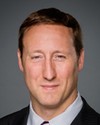Thank you very much, Mr. Trottier.
I want to congratulate you on your position on this committee and on your election to Parliament.
There has been a lot of misunderstanding about this. Operational hubs, in essence, allow us to either pre-deploy in position or to support ongoing operations. The open secret that we had a base such as this in the United Arab Emirates is a perfect example.
During the deployment for humanitarian relief into Haiti we used Jamaica to put large aircraft, like the C-17, in place, with supplies, water, food aid, medicine, and with individuals, and then we flew a smaller but large transport plane, the C-130 Hercules, into Haiti on austere runways. It is giving us that ability to maximize proximity to a theatre of operations.
It was not accurate to report that we were in any way envisioning setting up large, permanent bases in locations throughout the world. We are simply negotiating and discussing with various countries the ability to make use of existing facilities and perhaps have a hangar or pre-deploy individuals and equipment for the purposes of increasing Canada's ability to contribute to the world, as we are doing in Libya in a place like Sigonella. We are using existing airfields in Sicily, in Italy. We've been able to maximize Canada's effect in the world. Many members of the Canadian Forces and their families will remember being in Lahr, Germany.
So we are trying to mirror the success that we've achieved in other regions of the country by simply using those forward deployment areas and negotiating that with allies. It makes perfect sense in a world of quick response and the necessity of the Canadian Forces to be able to get to these areas and contribute mightily, as they do. I'm extremely proud of the effect that those men and women have had, and we're doing everything we can to support them through equipment readiness and the diplomatic interventions that can help them achieve their missions.

